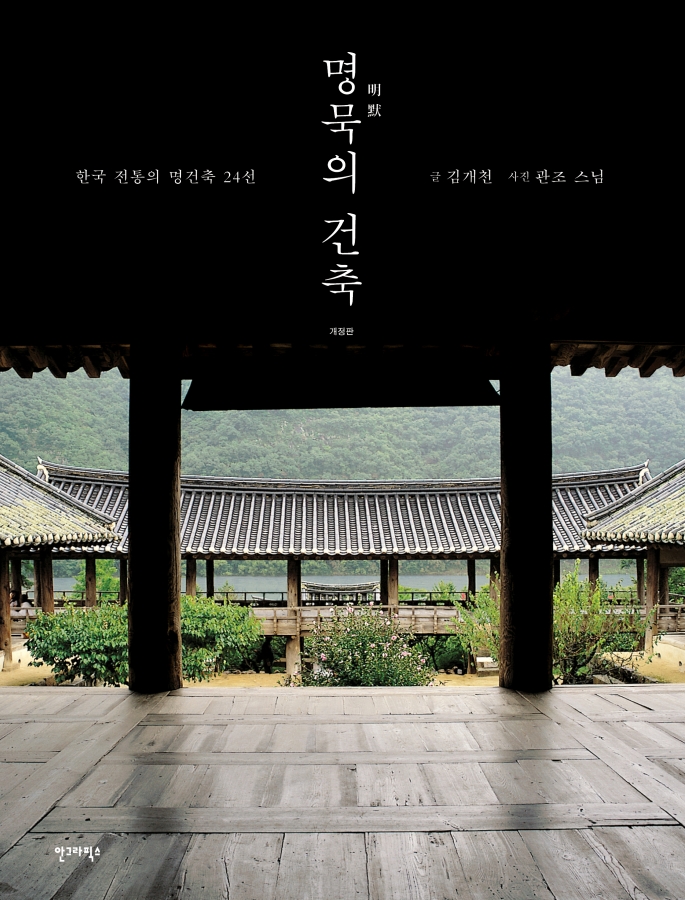He is an architect and designer, a professor at Kookmin University’s College of Architecture, and has specialized in architecture and Seon (Zen) philosophy. He has been working on architectural planning and design, painting and writing with ideas that cross over from Korean tradition and Seon thought to contemporary aesthetics. He has published books on Eastern architectural aesthetics such as “Architecture of Ming Ming” and “Lao Tzu and the Idea of Spatial Formation” and papers on the aesthetics of contemporary architecture. His representative buildings include Iham Campus, Gyeongju Dongguk University Seon Center, One Room House, Museum Myeongwon at the Kookmin University, and Gunmyungwon. He has been honored with the Red Dot Design Award, the Korean Institute of Architects Award, the Korea Design Award, and the Outstanding Book of the Year Award by the Ministry of Culture, Sports and Tourism.
Authors
Kim Kai-chun
김개천
다른 사람들
-
He is the abbot of Dokuozan Genko-ji Temple of the Soto School, a garden designer, and a professor in the Department of Environmental Design at Tama Art University. Born in 1953, he graduated from the Department of Agriculture in the College of Agriculture at Tamagawa University in Japan and practiced at the head temple Sojiji. While creating Zen gardens, he has given lectures at schools and museums around the world. As a garden designer, he has received numerous honors, including the Art …
-
Margaret Colquhoun
1947–2017. Goethean biologist and the Founding Director of the Life Science Trust, based at Pishwanton Wood in East Lothian, Scotland, at the foot of the Lammermuir Hills. She studied zoology and genetics with agricultural acience at Edinburgh University in the 1960s and worked there as a Research Associate in the 1970s on questions of population genetics and evolutionary biology. Later on, still carrying questions into the reality and relationship of taxonomy and evolution, she spent four … -
Cheon Sang-hyun
Graduated from the Department of Visual Communication Design at Hongik University, he is an editorial designer and picture book planner. Currently, he is the head of Sang Publishing, a publishing house specializing in creative picture books. From 2008 to 2011, he published 《Picture Book Imagination》, Korea’s first magazine dedicated to picture books. He has been involved in planning and organizing the CJ Picture Book Festival, an international picture book exhibition linked to the CJ Picture … -
Kim Eun-ha
She completed her doctorate in education at the University of Cambridge. She is currently a researcher at the Institute of Social Education, Korea University Continuing Education Center, where she develops programs for teachers. -
Sofie Beier
Sofie Beier is an internationally recognized researcher in typeface legibility and professor WSR at the Royal Danish Academy. She has a long career in academic research and is the author of several books and numerous academic articles on typography and legibility. -
Koo Sang
Professor Koo, Sang has been researched for mobility and automotive design over 30 years since his career in Kia Motors Design Center either California Design Research Center as a senior designer, and now works as a professor at Hongik University. He got a doctor degree at the Graduate School of SNU for the first turn. He wrote 12 books related to automotive design and two long novels. Nowadays, he is writing design critique columns in Medias for every week. So far, they’ve collected more … -
Ko Bong-seok
He graduated from Hongik University and the Graduate School of Industrial Art. He is a member of the Korean Institute of Brand Design. He is currently the CEO of August Brand. -
Studio 3
Studio 3 is an in-school design agency at the Graphic Design Department of Westerdals School of Communication in Oslo (Norway). Studio 3 was established in 2002 and exists of a handpicked selection of 15 truly dedicated 3rd year’s graphic design students. -
Kim Hee-young
She graduated from Seoul National University’s College of Arts and Humanities with a B.A. in English Literature and received her M.A. in Fine Arts from the same graduate school. She earned an MA in art history from the University of Chicago and a PhD in art history from the University of Iowa. She is currently a professor in the Department of Art at Kookmin University College of Art. She is the author of Korean Abstract Painting: A Formation of Korean Avant-Garde (2013), The Vestige of … -
Yoon Je-won
Yoon Je-won majored in geography education and aesthetics at Seoul National University and graduated from the Gumbap Academy. She was very interested in performing arts, art, and video, which she was exposed to in college, and was active in performance festivals and film festivals. She pursues natural translation by utilizing her long experience in video translation and is interested in various fields such as education, cooking, philosophy, art, and foreign languages, and strives to convey … -
Moon Young-dae
he has served as a curator at the Hyundai Department Store Museum of Modern Art and as chief curator at the Dong-A Gallery, organizing exhibitions such as “Bourdelle Sculpture,” “Modigliani and the École de Paris,” and “Camille Claudel and Rodin.” While studying abroad at the Herzen State Pedagogical University of Russia in St. Petersburg, he received support from the Russian Academy of Arts to hold the exhibition “A Path to the Masters.” he discovered the Korean-Russian painter Byeon … -
Kang E-Roon
He runs the design studio Math Practice in New York City and recently co-founded 908A, which researches and develops design tools for culture and the arts. He studied graphic design at Yale University and was a Special Research Fellow at MIT’s Sensible Cities Lab in the Department of Urban Planning. He has taught at the Bauhaus Weimar University in Germany, New York University ITP, and is currently an Assistant Professor at Parsons School of Design.
